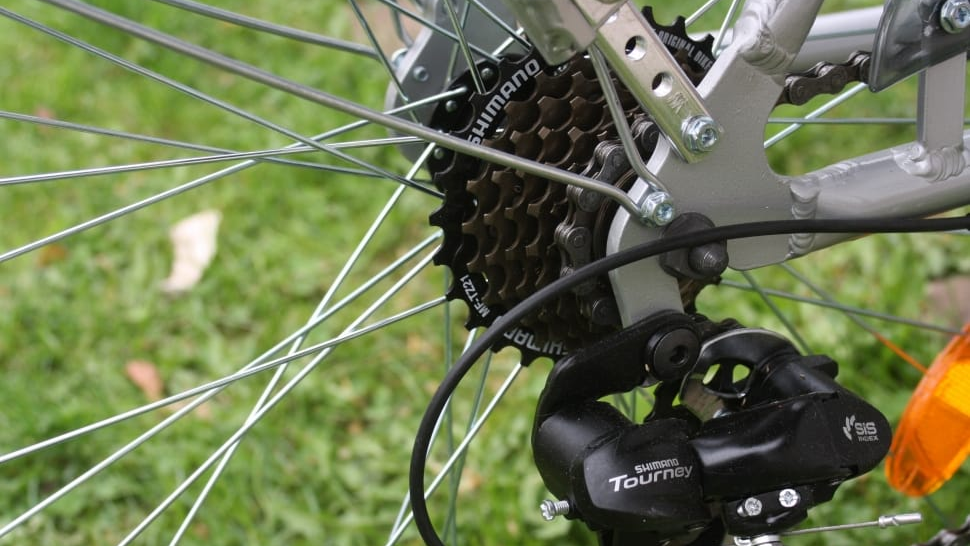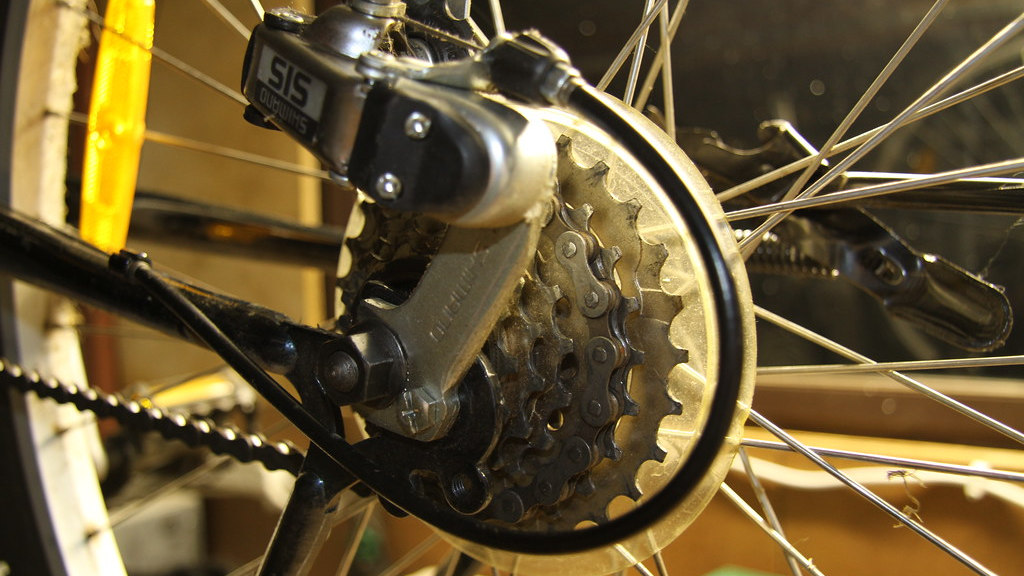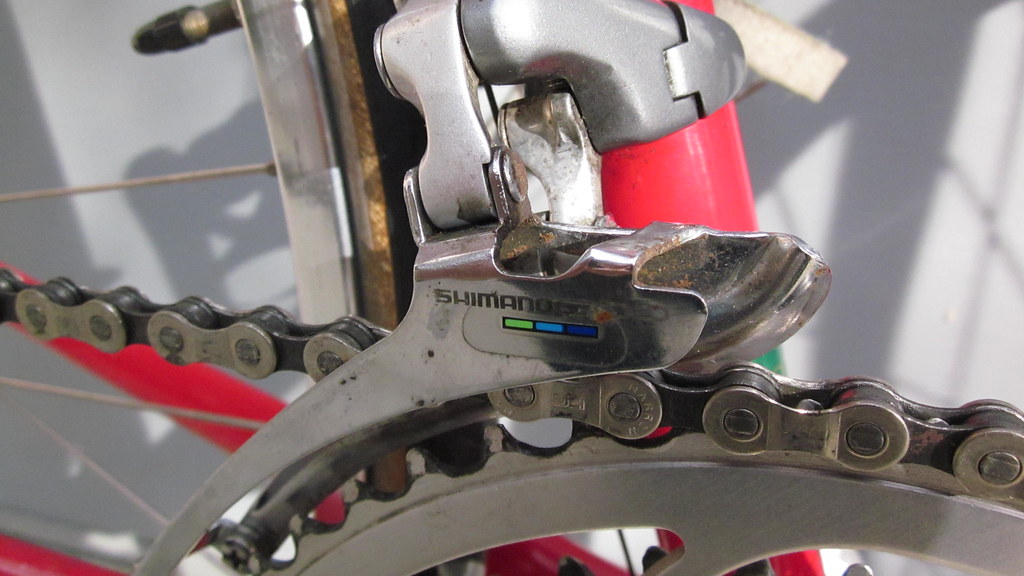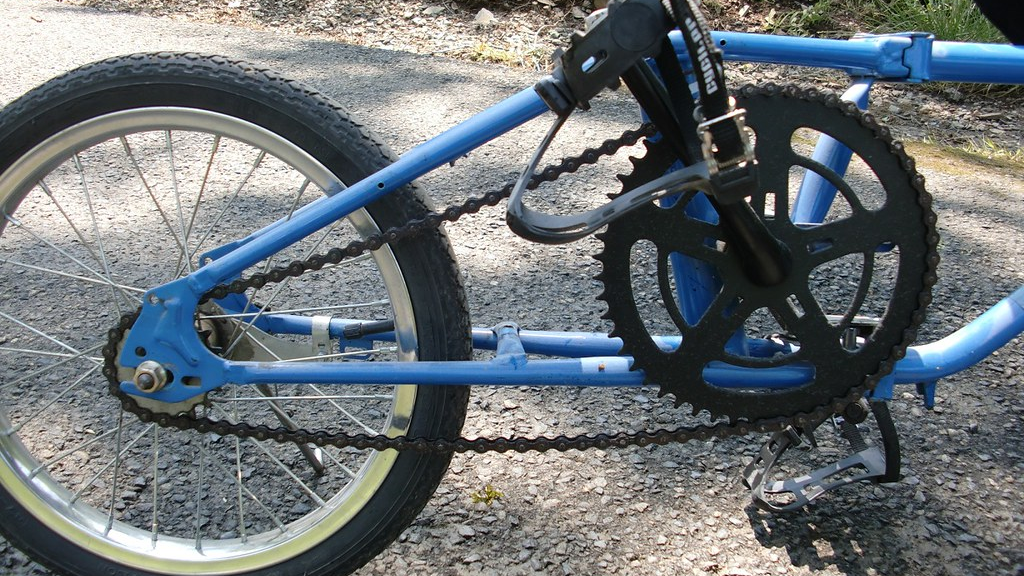It is crucial for cyclists of all levels to learn how to adjust bike gears. Proper gear alignment ensures a seamless ride, allowing you to pedal with ease and efficiency. Whether you’re tackling steep hills or cruising on flat terrain, the right gear setting can significantly enhance your cycling experience.
In this post, we’ll provide clear, step-by-step guidance on how to fine-tune your bike’s gears. This will not only improve your ride quality but also prolong the lifespan of your bike components.
Stay tuned as explain in detail how to adjust bike gears and simplify this essential maintenance task, ensuring your next ride is as smooth as the gears you’ll master.
How do Bike Gears Work?
Bike gears are integral to cycling, offering the rider control over pedaling resistance and speed. The front gears, or chainrings, and the rear gears, known as the cassette, work together to adjust the gear ratio.

This ratio determines how many pedal revolutions are needed for the rear wheel to complete a full turn. A lower gear ratio means easier pedaling on inclines, while a higher ratio allows for faster speeds on flat surfaces.
By selecting the appropriate gear combination, cyclists can maintain a consistent pedaling effort regardless of terrain, ensuring an efficient and comfortable ride. Understanding how to adjust the bike gears properly can significantly improve your riding experience.
Signs Your Gears Need Adjustment
When your bicycle’s gears exhibit persistent skipping, produce unusual sounds, or resist smooth shifting, these are clear indicators that adjustments are necessary. Frequent gear slippage, especially under pressure, points to a need for fine-tuning.

A chain that rattles or grinds against the derailleur cage signals misalignment. If you experience hesitation or resistance when changing gears, it’s time to assess your gear system. Regular maintenance can prevent these issues, ensuring a seamless ride and prolonging your bike’s lifespan.
Addressing these signs promptly can enhance cycling performance and safety.
Tools Required
Adjusting bike gears requires precision and the right set of tools.
- Screwdriver
- Cable Cutters
- Allen Wrenches
- Bike Stand or Repair Stand
These tools are fundamental for any cyclist looking to maintain their bike’s gear system efficiently.
How to Adjust Bike Gears?
Follow the step-by-step guide to learn how to adjust the gears on a bike:
1. Preparation
Before adjusting your bicycle gears, it’s crucial to start with a clean bike. Dirt and grime can obscure underlying issues, so a thorough cleaning not only enhances performance but also allows for a detailed inspection.
Pay special attention to the drivetrain — clean cogs, chain, and derailleur can significantly improve gear shifting. Once your bike is spotless, examine it for signs of wear. Look closely at the chain, cassette, and chainrings for any damage or excessive wear, as these are often the culprits of poor gear performance.
If you find any components that are worn out, consider replacing them to ensure your gear adjustment is effective and lasts longer. Proper maintenance and timely replacement of parts can save you from future hassles and keep your rides smooth and enjoyable. Remember, a well-maintained bike is a reliable companion on your cycling adventures.
2. How to index a rear derailleur
Adjusting a bicycle’s rear derailleur ensures smooth gear shifts and reliable performance. Begin by shifting to the smallest cog and inspecting the cable tension; it should be taut but not overly tight.

If the chain skips or hesitates, increase the tension by turning the barrel adjuster counterclockwise. For larger cogs, if the chain rubs or fails to shift, decrease the tension by turning clockwise.
Next, set the limit screws. The ‘H’ screw controls how far the derailleur moves towards the smallest cog; turn it until the pulley aligns with the cog. The ‘L’ screw does the same for the largest cog.
Finally, check the B-tension screw, adjusting it so the pulley clears the largest cog by 5-6mm. Test ride and fine-tune as needed for optimal gear transitions. Remember, patience and precision are key to a well-indexed derailleur.
3. How to index a front derailleur
To index the front derailleur for seamless transitions between chainrings, start by shifting to the smallest ring. Ensure the derailleur doesn’t rub the chain; adjust the ‘L’ screw if it does. Shift to the largest ring, checking for hesitation. If present, tighten the cable slightly.

For rubbing, adjust the ‘H’ screw until the derailleur clears the chain. The cable tension is crucial; it should be firm, allowing the derailleur to move freely between rings. If shifting is still imperfect, re-examine the ‘L’ and ‘H’ screws, making minor tweaks for precision.
A well-adjusted front derailleur will move the chain smoothly across chainrings without noise or resistance, enhancing your cycling experience. Aim for a balance where the chain glides effortlessly, indicating a properly indexed system.
This meticulous adjustment process is vital for a responsive and enjoyable ride.
4. Fine-Tuning
After adjusting your bicycle gears, fine-tuning is essential for peak performance. Start by testing the shifting under load; ride and shift through all gears. Listen for any hesitation or noise indicating further adjustments are needed.
For precise shifting, recheck cable tension and ensure it’s neither too tight nor too slack. Adjust the barrel adjuster incrementally while pedaling to find the sweet spot. If gears skip or misalign, revisit the limit screws for minor corrections.
Always test ride after each adjustment to confirm the smooth operation. This iterative process of tweak, test, and re-tweak ensures your gears respond accurately to shifting commands, providing a seamless riding experience.
Remember, small adjustments can make a significant difference, so approach fine-tuning with a meticulous and patient mindset for the best results.
5. Test Ride
Post gear adjustment, a test ride is crucial to confirm the gears shift with precision. Mount your bike and cycle through various terrains, shifting gears to assess their responsiveness. Pay attention to each transition; it should be crisp and immediate.

If you detect any lag or noise, it may signal the need for further fine-tuning. During this ride, also observe the ease of pedaling across different inclines. The true test of gear adjustment lies in its ability to adapt to your riding style and the road’s demands.
A successful adjustment means gears that shift intuitively, almost anticipating your next move. This harmony between rider and machine is the hallmark of a well-tuned bicycle, ensuring a ride that’s both enjoyable and efficient.
Remember, the goal is a smooth, effortless gear change every time, under every condition.
How to Adjust Bike Gears Shimano?
If you’re wondering how to adjust bike gears Shimano rear, you must first ensure that the derailleur aligns correctly with the gear cogs. This involves turning the barrel adjuster to fine-tune the cable tension, ensuring smooth shifting across the gear range.
When it comes to how to adjust bike gears Shimano front, the focus is on the position of the front derailleur. It should be parallel to the chainrings and the correct height above them. Adjusting the limit screws will help prevent the chain from falling off the chainrings during shifting.
Meanwhile, the steps on how to adjust Shimano gears on a mountain bike are slightly different. You must align the rear derailleur with the cassette using limit screws and adjust cable tension for precise shifting. Set the front derailleur’s height and angle, adjusting tension to ensure smooth chain movement between chainrings.
How to Diagnose Common Drivetrain Problems?
Identifying and resolving drivetrain issues is key to maintaining a smooth cycling experience. Common problems include chain rubbing, ghost shifting, and chain dropping. Chain rubbing often occurs when the chain grates against the front derailleur cage, usually fixed by adjusting the derailleur’s position.

Ghost shifting, where the chain unexpectedly changes gears, typically requires a recalibration of the rear derailleur or cable tension. Lastly, a dropping chain might suggest a worn chain or misaligned derailleur, necessitating a replacement or realignment.
Regular inspection and timely adjustments can prevent these issues from disrupting your ride, ensuring a reliable and enjoyable journey on your bike. Remember, addressing these problems promptly can save time and resources in the long run.
Maintenance Tips
Apart from learning how to adjust gears on a bike, you should know how to maintain your bicycle gears for optimal performance. It’s essential to adhere to a routine maintenance schedule.

Regular cleaning of the gears prevents the accumulation of grime and debris, which can impede smooth shifting. After cleaning, applying a quality lubricant ensures that the gears operate efficiently, reducing wear and tear.
Additionally, periodic check-ups by a professional can detect any issues before they escalate, such as misalignments or worn components. These simple yet effective practices not only prolong the lifespan of your bike’s drivetrain but also contribute to a safer and more enjoyable cycling experience.
By incorporating these maintenance tips into your cycling routine, you can keep your bike in top condition and ready for any adventure.
FAQs
1. How to adjust gears on a mountain bike?
Shift through gears while turning the pedals; adjust cable tension for smooth transitions.
Use barrel adjusters to fine-tune tension; align derailleurs with gear cogs.
Turn the limit screws until the derailleur aligns with the smallest and largest cogs without going past them.
Adjusting bike gears can be easy with basic knowledge and tools.
Conclusion
Adjusting bike gears is a skill that enhances your cycling experience. This guide has outlined the steps on how to adjust bike gears for a smoother ride. Practice is essential; take the time to familiarize yourself with the process.
You should not hesitate to seek professional assistance if challenges arise. Your safety and comfort are paramount. We welcome your feedback and questions. Share your experiences or seek advice in the comments below.
Together, we can ensure every journey is as enjoyable as it is efficient. Make sure your bike is well maintained so it can be a reliable companion on the road.



